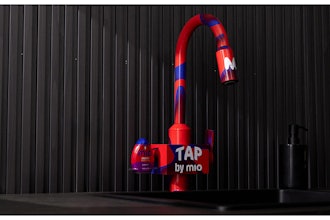Just as manufacturers were starting to understand and accommodate common traits of millennials in the workforce, a new generation has joined the job market: Generation Z. Born between the mid-1990s and mid-2000s, this generation is expected to make up a 20 percent-and-growing portion of the workforce by 2020. With some distinctive profile characteristics, this crop of young adults seems capable of shaking up manufacturing’s workforce issues—yet again. New expectations for management styles and communication tactics are just the beginning of the kinds of shifts this new generation will influence. Fortunately, technology can help manufacturers and suppliers as they hone their strategies for appealing to this highly-sought demographic.
The Two-Pronged Problem
The manufacturing industry has been struggling with a shortage of skilled workers for nearly a decade, making little progress. The contributing factors have been dissected in countless articles, but can be distilled into two main points: First, 10,000 Baby Boomers hit retirement age every day, causing huge gaps and a drain of the tribal knowledge as senior managers said their goodbyes. Then, the post-recession recovery also created new job openings, especially in tech fields. Digitalization and innovations, forced manufacturers to modernize to keep pace with customer demands. That often meant trying to recruit workers with talents in technology fields. With jobs remaining vacant for months, manufacturers have had to focus on upskilling current employees as well as recruiting candidates from special groups, like veterans or Millennials.
Many studies have been conducted around the characteristics of Millennials, as employers in all industries have sought to find the right mix of benefits and job perks to help entice and retain recent graduates. Now, much of that work must be adjusted as Generation has distinct differences, ones that will impact how employers will want to define roles, provide training, give feedback, and motivate performance.
Change Happens, Keep Pace With It
Gen Z brings a new mindset and new set of expectations. Some generational experts classify this generation as more ambitious than Millennials, citing that 55 percent feel pressure to gain professional experience in high school and 75 percent even indicated they were more worried about getting a job and starting a career than they were about finding a soul mate. Understanding the priorities of this generation will help managers tailor recruitment strategies. So, what are these career-minded individuals looking for in a job? Survey results show that 75 percent value work that is meaningful, and 64 percent say they want a job which offers an opportunity for career growth. Pay is very important to 70 percent of candidates, with 46 percent citing the ability to pursue their passion, and 39 percent saying they are looking for a challenging, exciting experience. Generation Z also has very high expectations of their employer, with 75 percent saying organizational diversity is very important to them and 38 percent saying the company’s honesty and integrity is important.
Generational Traits And How Technology Can Help
Adjusting recruiting tactics is just the beginning. Once a Generation Z candidate is hired, other operational and policy changes will likely be needed to keep this generation engaged and satisfied with their role.
IT Solutions With Ease Of Use. Whether on the shop floor, operating a forklift or working in accounting, today’s new hires expect to work with IT solutions which have the same consumer-friendly, intuitive interface as the solutions they use in their personal life.
Knowledge Transfer. Generation Z grew up with YouTube at their fingertips. When they want to research a topic, they turn to Wikipedia. This has fostered expectations that their employer will provide onboarding and training content in similar formats. They also expect training opportunities to be ongoing.
Portals And Intranets. This generation is also said to have a short attention span—8 seconds. This should be considered when planning ongoing training. Consider providing learning modules—short units with hands-on activities, rather than lecture formats. Content that is mobile-first and available on-demand, broken down into 12-15-minute segments will be the most effective way to bring new recruits up to speed on company procedures and role expectations.
Dashboards And Workbenches. Gen Z workers see themselves as independent and self-motivating. They are highly opposed to being micromanaged, preferring an environment which supports self-directed goals and continuous feedback. Software that provides role-based dashboards and self-service tools for setting and monitoring personal Key Performance Indicators (KPIs) will appeal to this generation.
Access To Data. Today’s worker wants access to the data they need to make well-informed decisions. Growing up in the era when they can find answers to any question on their phone, they expect that same type of immediate response in the workplace. Whether it is finding out how many vacation days are available, tracking their own productivity, or preparing financial reports for their business unit, access to relevant data is a high priority.
No Busy Work. The Generation Z workforce is accustomed to digital automation and expects most routine administrative tasks to be automated. As digital natives, they intuitively know that many business processes, from timesheets to expense reporting, can be easily automated. No matter what department the recruit will be joining, he will expect IT functionality to replace tedious tasks.
Flexibility. Generation Z does not believe in being tied down to a particular workstation and expects the flexibility to work from different environments. That may mean completing reports, while sitting in the cafeteria or accessing on-demand training from the comfort of home.
Growth. Generation Z is also looking for opportunities to try new things and see value in holding more than one position in an organization. Technology can support lateral and upward growth moves in many ways. Human Capital Management (HCM) software with predictive analytics can help suggest open positions which may be well suited for a person’s aptitudes or interests, while advanced talent science solutions can identify when an individual is a candidate for promotion or a when some additional training may help fulfill a performance deficit.
Hive mentality. Although Generation Z likes self-directed work, they also are accustomed to connecting to their network for collaboration. This group has been subjected to “group projects” and “team building activities” since grade school. Employers should not expect this “hive mentality” to change once the individual enters the workforce. Offering internal work-related collaboration tools is one way to support engagement and encourage the workers to communicate, seek advice from colleagues, and satisfy the need to stay connected to peers.
Appealing To The Newest Generation of Workers
Manufacturers need to adjust their recruiting strategies to appeal to the next generation of workers. Understanding Generation Z’s unique priorities and expectations for work will help managers appeal to this demographic. If manufacturers are going to overcome the shortage of workers, they must make jobs as appealing as possible. Now more than ever before, manufacturers should leverage HCM solutions to help them manage the complex recruiting, retaining, training processes. Technology, from the usability of the ERP to self-service reporting and role-based workbenches, will help create the environment recent graduates expect.
Nicholas Castellina is Director of Industry and Solution Strategy at Infor.























